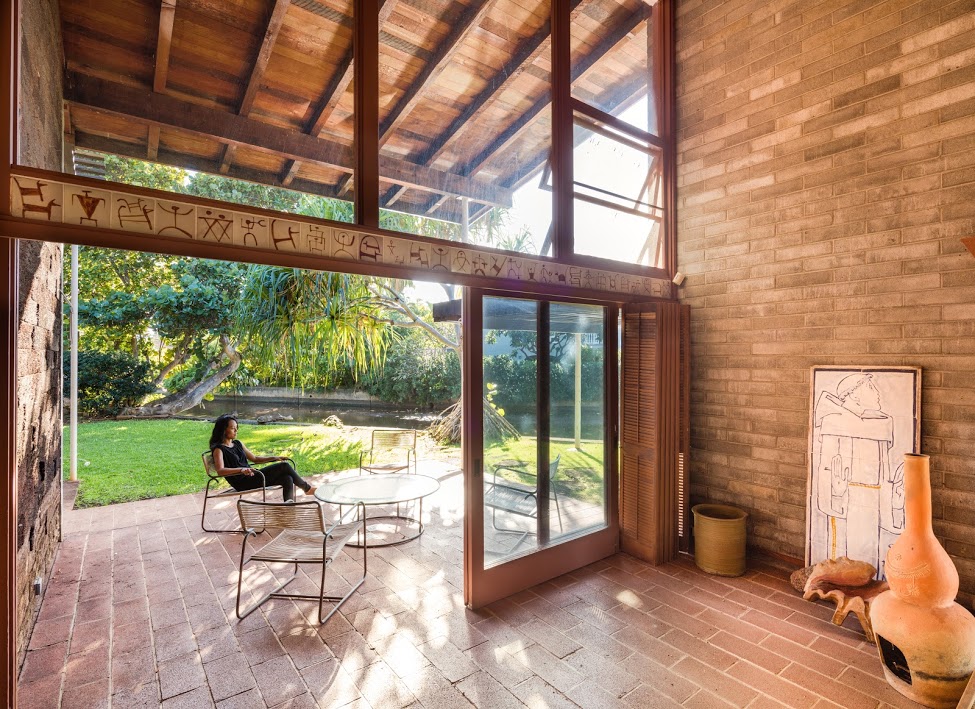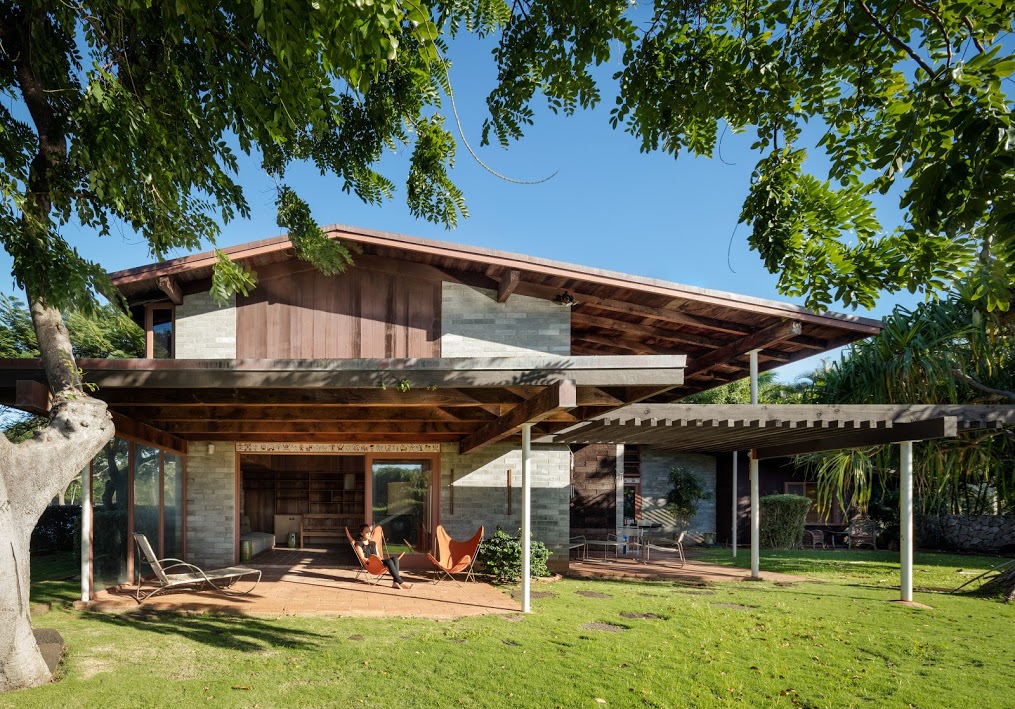An innovative management and operations plan for the historic Jean and Zohmah Charlot House proposes a new path forward for the unique cultural asset.
Work on a new framework plan for Charlot House began over the summer of 2020 through a pilot partnership between Historic Hawai‘i Foundation and the University of Hawai‘i Community Design Center (UHCDC) at the School of Architecture in Mānoa. The proposal includes novel, revenue-generating programming scenarios with steps for incremental implementation over the next five years.
“The Jean and Zohmah Charlot House is an opportunity for both the university and the community to understand and support the intrinsic value of great works of art, the artists who create them, and the role of successive generations in sharing the history and works with others,” said Kiersten Faulkner, executive director of Historic Hawai‘i Foundation.
“The partnership between our non-profit organization and key departments at the University allowed all of us to play to our strengths,” Faulkner said. “This collaboration helped us explore possibilities through lenses of both community value systems and academic rigor.”
The split-level Ranch-style house built on Kāhala Avenue in Honolulu in 1958 is uniquely significant for its integration of art and sculpture, the use of varied materials and textured surfaces, the openness and connection between indoor and outdoor living spaces, and the importance of cross-cultural history and connections that led to one of the great collaborations between artist and architect.
“The coherence and novelty of its siting and spatial organization offer mid-century modernism an exemplary sub-tropical showpiece,” said Professor Daniel Friedman, FAIA, former dean of the School of Architecture and current UH-Mānoa Campus Architect.
“Custom-crafted wall-size glass doors dissolve the boundary between interior and exterior space, multiplying the social circumference and amenities of the house; its three generous lanais in turn complement double-height ground-floor volumes,” said Friedman. “The house’s interior surfaces integrate native materials like hāpu‘u and ‘ōhi‘a wood, each a story in itself; but arguably the biggest story in the house is Jean Charlot’s glorious living room mural, which deserves an essay all its own.”
When the Charlot family gifted the home to the University of Hawai‘i in 2001, the University took steps to ensure that it would be protected in perpetuity by granting a preservation and conservation easement to Historic Hawai‘i Foundation. The University secured this legally-binding commitment in acknowledgment of the architectural, historic and cultural significance of the property.
In the 20 years since the University accepted the donation of the home from the Charlot family, the house has been used as a residence for visiting faculty from Tongji University; for occasional tours, retreats, meetings, and special events; as instructional space for graduate design studios; and most recently as the inaugural headquarters for UHCDC, before the nascent community-service organization outgrew the space and moved operations to the main campus.
From April 2009 to December 2015, the School of Architecture and UH Mānoa facilities and planning offices shared management responsibilities for the property. In January 2016, the kuleana for Charlot House moved to UH System offices, first to the Office of the Vice President for Administration, then later to the Office of the Vice President for Budget and Finance. As the responsibility for the property moved within the UH System, HHF continued to exercise oversight of the easement, which stipulates use, maintenance, and treatment of the historically-significant building and grounds.
Friedman stayed in the house for a short time during his transition from Seattle to Honolulu in July 2014. “Everywhere you turn Charlot’s logic of composition integrates family life and art—light, view, ventilation, surface effects, tectonics, detail, ornament. It’s difficult to deny the living presence of the artist,” he said. His experience there galvanized Friedman’s enduring commitment to the property.
As UH grapples with management of its campuses, real estate assets, and capital expenditures during a time of increasingly dramatic financial constriction, the University reassessed the past and projected costs of maintaining Charlot House, resulting in concern about the growing challenges of long-deferred maintenance and long-term obligations under the terms of the easement.
In June 2019, following conversations with the University of Hawaiʻi Office of Budget and Finance, Friedman convened a “Charlot House Summit,” inviting planners, architects, art historians, archivists, scholars, students, and preservationists to discuss options and formulate short- and long-term use, maintenance, management, and operational parameters for this critically important historic structure.
Summit participants aimed to define alternative strategies that would comply with the purpose and legal obligations of the easement and at the same time further the educational, environmental, and community goals of the University, providing financial and other resources for appropriately sustaining and stewarding the property.
In May 2020, Historic Hawai‘i Foundation entered into an agreement with UHCDC to jointly develop a Summer Scholar Internship Program. The first project developed a formal evaluation of the Charlot House options with a framework for future management. HHF provided additional financial support with the assistance from a grant from the Hatfield Aloha Fund.
UHCDC hired first-year architecture student Nicole Bowman as the Summer Scholar to work under the Friedman’s direction, regularly checking in and consulting with Faulkner.
Bowman interviewed the 2019 summit attendees and other stakeholders and conducted additional research into past reports about Charlot’s life, work, the property, and its needs and opportunities. She and Friedman compiled the findings into a comprehensive report.
The final Charlot House Report recommends that UH establish a comprehensive management approach built around the intrinsic values of the property, emphasizing both the importance of the whole and the interdependence of the parts. It outlines strategies in the areas of land use and easement compliance, academic outreach, financial opportunities, cultural enrichment, and management structure.
“The proposed holistic management strategy aims to demonstrate the immediate and long-term academic and cultural benefits of the University of Hawaiʻi’s wholehearted commitment to this property, ensuring its unique place in the identity of both the University and the State, and especially its signal role in the UH educational ecology,” Faulkner said. “HHF looks forward to working with UH to realize this new vision.”
This article was published in the November 2020 issue of Historic Hawaiʻi News. A personal reflection by Summer Scholar Nicole Bowman will be shared in the near future.




